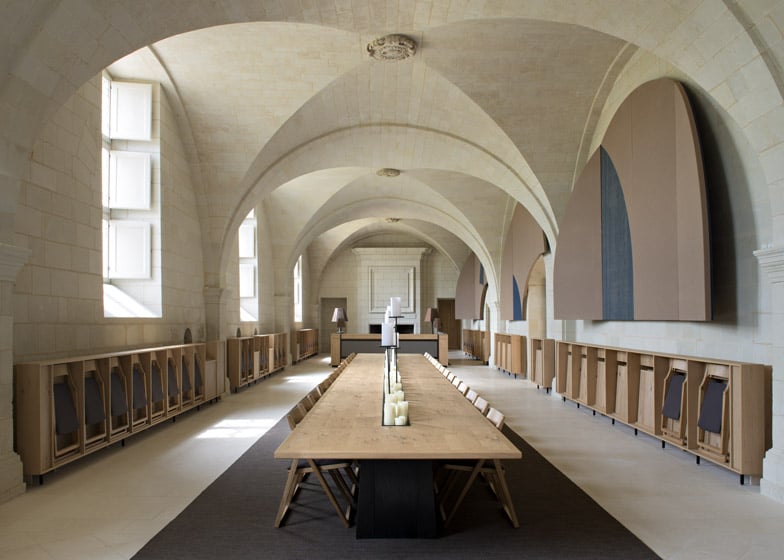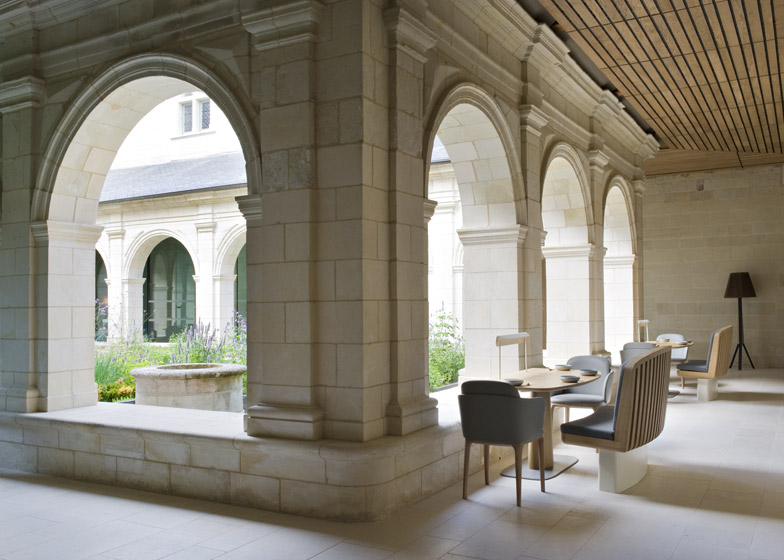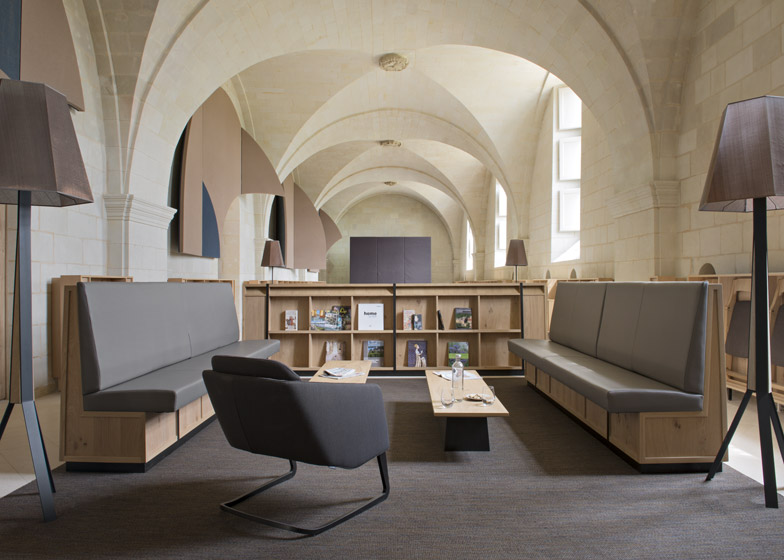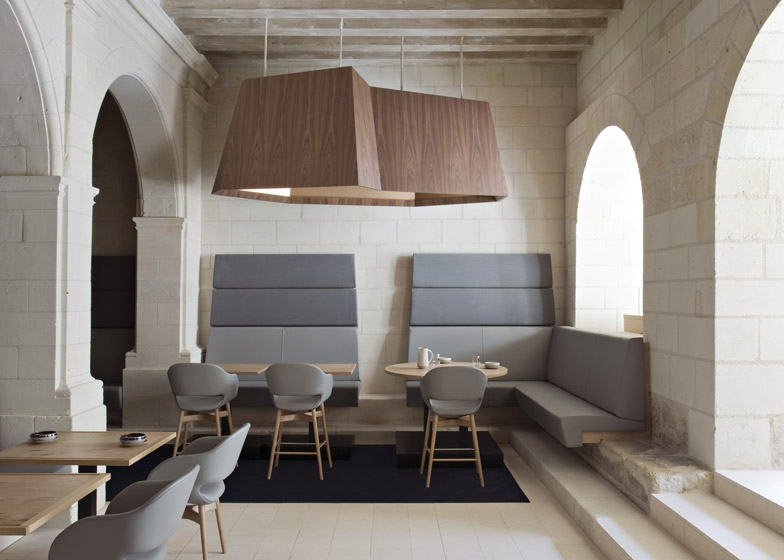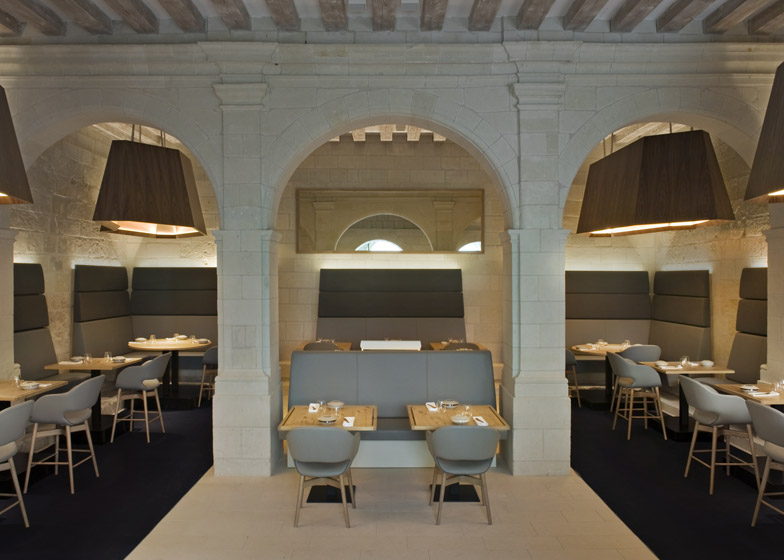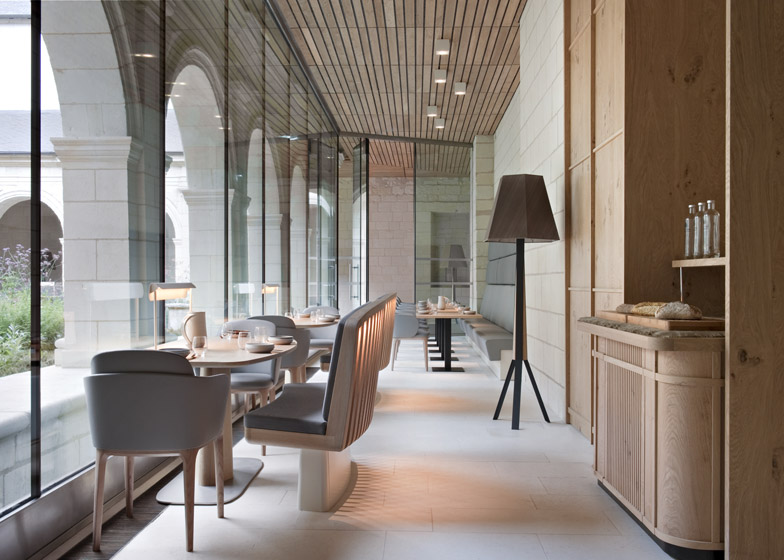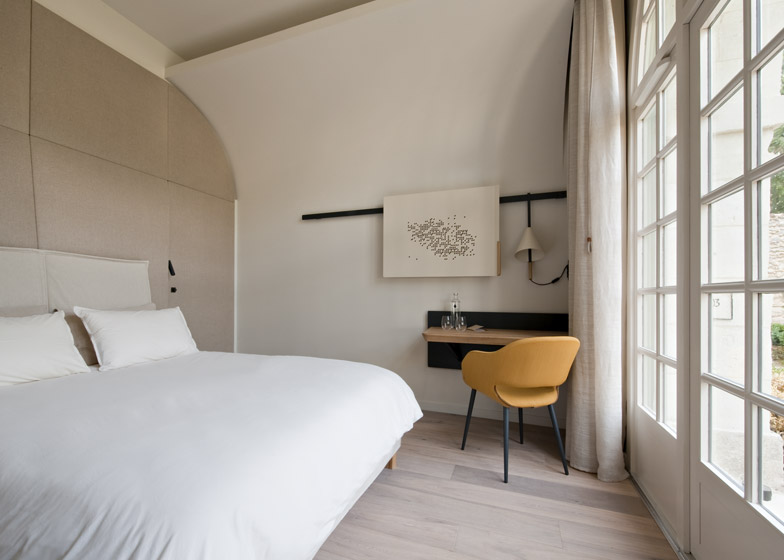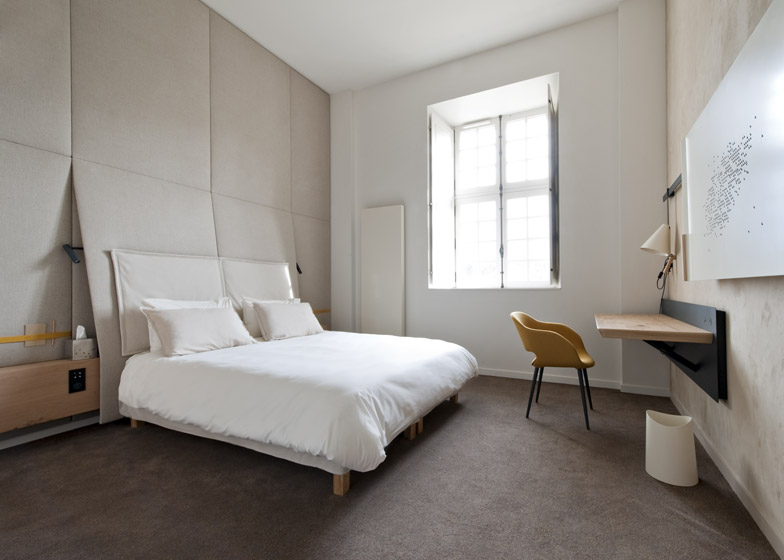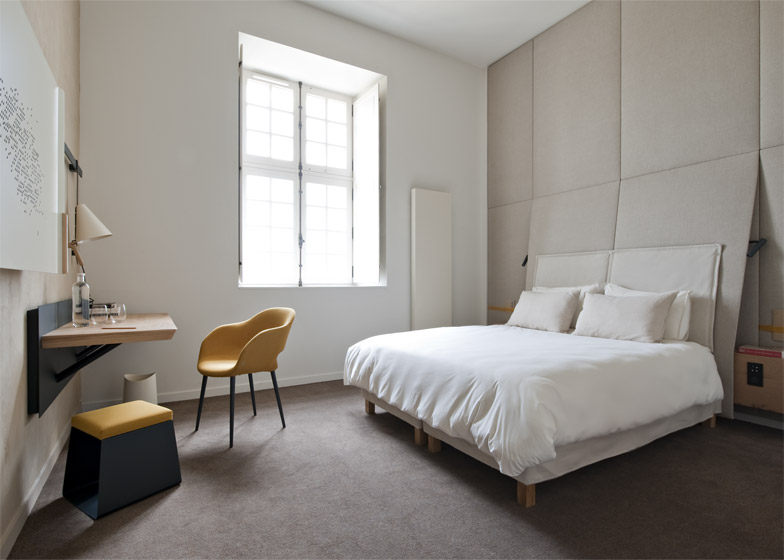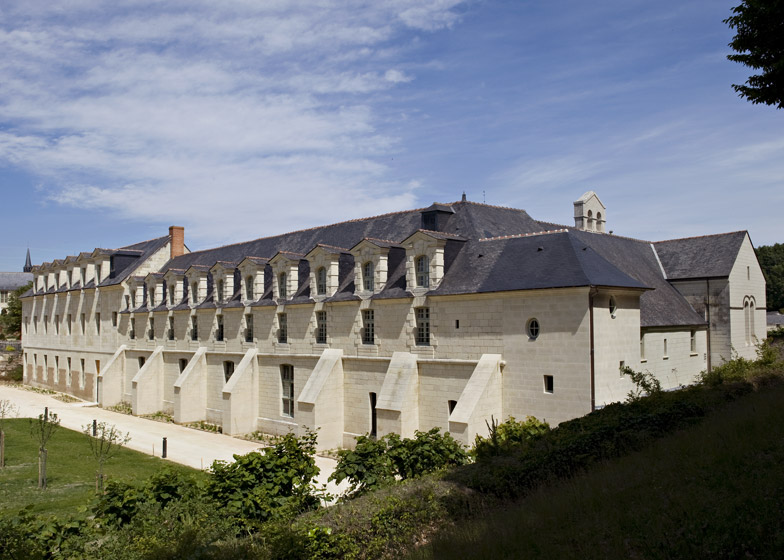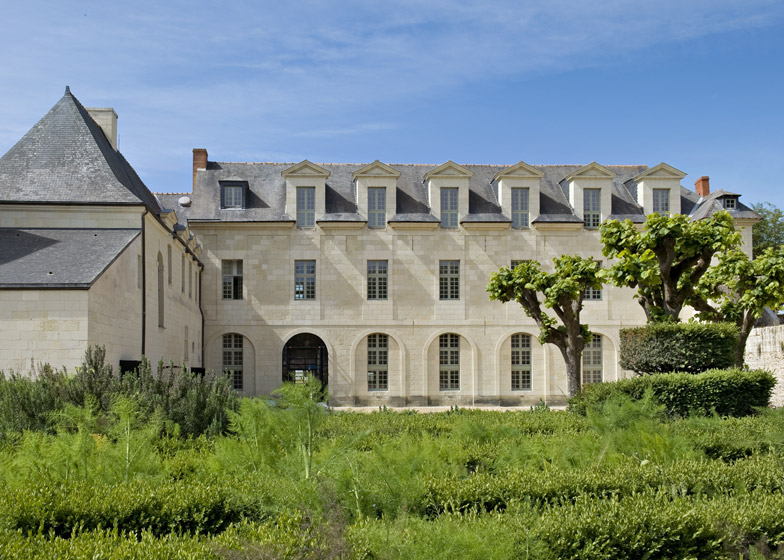Agence Jouin Manku has upgraded the interior of a hotel and restaurant in the French monastic city of Fontevraud using a palette of wood, metal and fabric to complement the original stone building – a former priory (+ slideshow).
Designers Patrick Jouin and Sanjit Manku of Agence Jouin Manku were tasked with refurbishing the protected interior of the Saint-Lazare priory as part of a redevelopment of Fontevraud Abbey and the four surrounding priories that make up a monastery complex dating from the Middle Ages.
The designers – whose past projects include the lounge in Munich's Bayerischer Hof hotel – were required to integrate 21st-century aesthetics and technologies without altering the original structure of the building, which had also been used as a hospital and a hospice for nuns before becoming a hotel and restaurant in the 1980s.
"What we wanted for Fontevraud was not the classic hotel and restaurant experience, but something unique; a journey between tradition and modernity that reinterprets the story of Saint-Lazare for the future, marrying emotion, sensual pleasure and poetry," said the designers.
Custom-designed freestanding furniture has been introduced to divide spaces and alter the functionality of the chapel, chapter house and refectory surrounding a cloistered garden, and a separate wing overlooking a physic garden.
The bedrooms are spread across various wings of the priory and are designed with a neutral palette to create tranquil resting places that reference the monastic history of the buildings. All of the furniture in the bedrooms is custom-designed, with some of the items concealed to reduce visual clutter.
Special attention is paid to acoustics in the rooms, with 22-centimetre-thick partition walls, wood cladding and fabric wall panels all included to help provide soundproofing.
Padded linen headboards suspended above the beds are intended to reference the hooded habits worn by Fontevraud's monks, while a steel rail fixed to the wall supports a cone-shaped metal lamp, television and coat hooks.
Beneath the Gothic arches of the priory's former chapel, the designers installed a publicly accessible bar with an "alter-like" monolithic seating and media unit extending along its centre.
The solid oak structure incorporates booths and table surfaces where guests can have a drink or interact with touch-screen table tops and tablets integrated into the furniture, which present content and games relating to the priory's history.
Six unique bespoke padded screens with built-in benches help to define the edges of the bar area while providing a dark and soft contrast to the stone walls and solid wood furniture.
The cloistered area at the centre of the abbey has been transformed into an 88-seat restaurant with tables that look out through new freestanding glazed walls towards the herb garden.
The restaurant extends into an adjacent chapter house, where banquettes with high padded backs were designed to sit on top of the existing stone surfaces.
Large hanging lights made from walnut and copper are suspended above tables in the chapter house. Their kinked forms aid the acoustics in the stone-walled space.
A former refectory has been transformed into a banqueting hall with an eight-metre-long dining table at its centre. The table is lined with folding seats that can be stored in units influenced by the stalls found in churches.
A line of candles placed along the length of the table is intended to recreate the monastic ambience of the original refectory, while four textile triptychs hung along one wall help to reduce echoes.
At one end of the space, bench seating provides a relaxation and reading area in front of a large fireplace.
The renovation process took more than two years and involved rebuilding buttresses and a tower on two sides of the building, rearranging the spaces to accommodate bedrooms and removing flagstone floors to install underfloor heating, all without damaging the original fabric of the priory.

